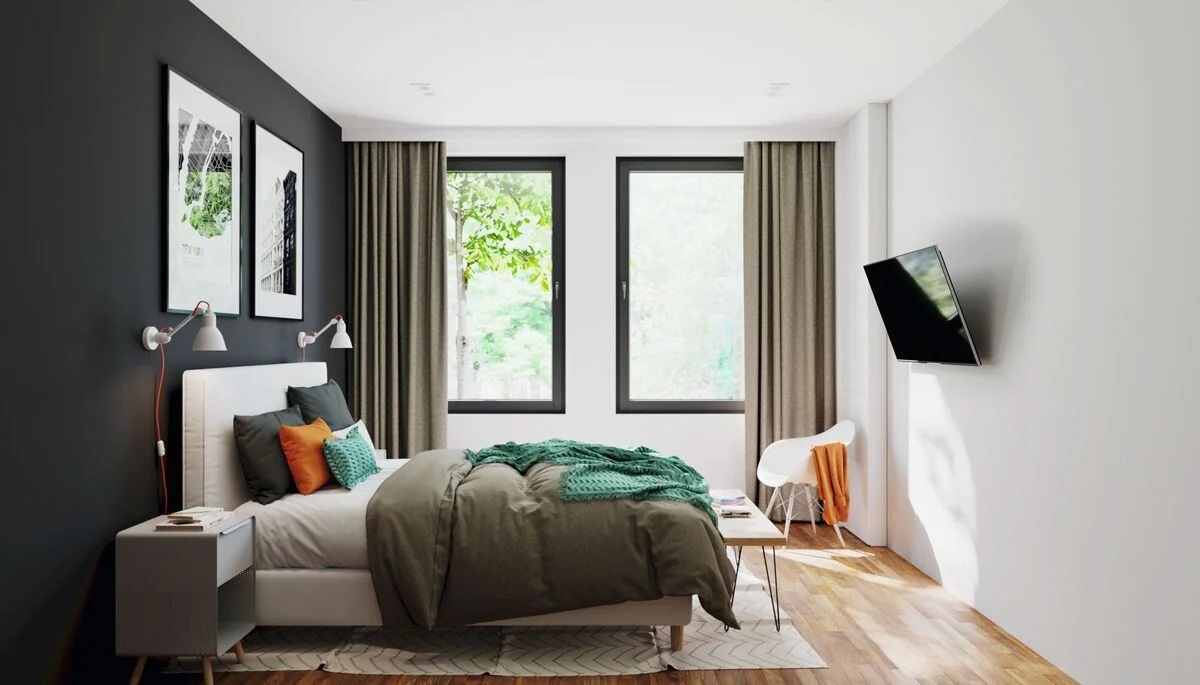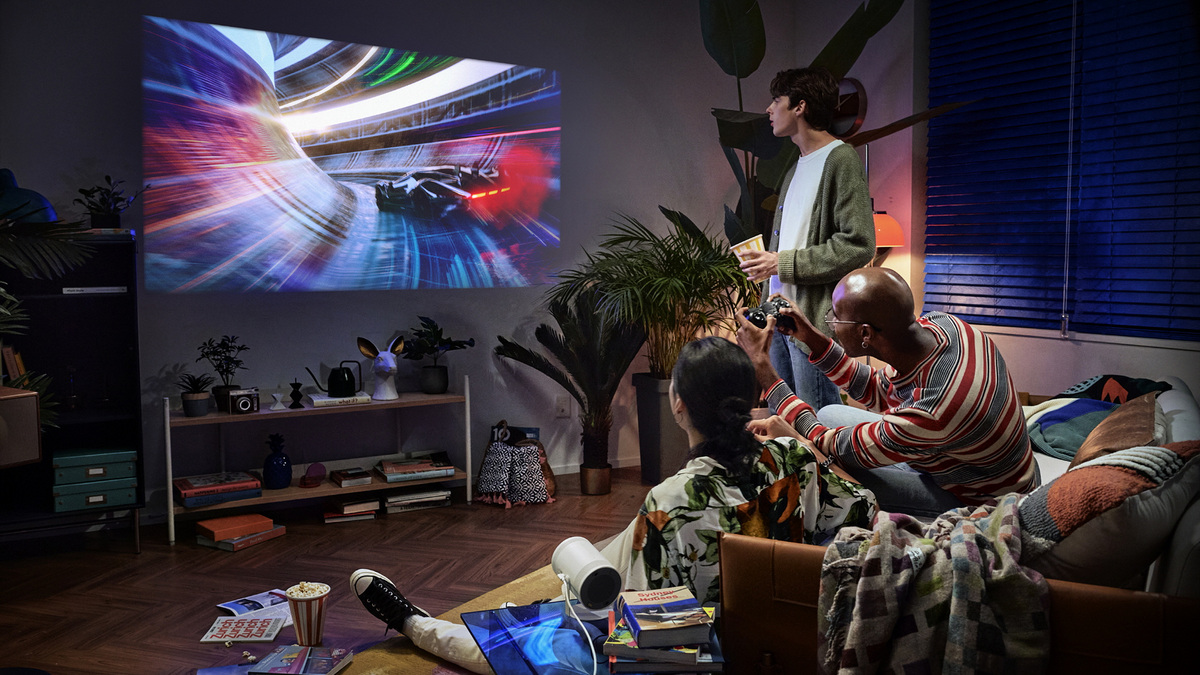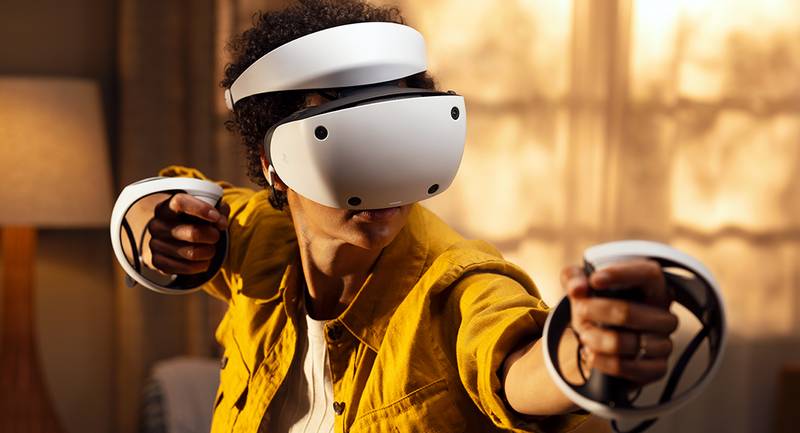.jpg)
After all, we go to the cinema precisely to get the powerful experience offered by the big screen and powerful sound. However, it is often underestimated how big of a screen you could watch a movie or series on at home.
In Estonia, in most homes, a fairly modest-sized screen is viewed from quite a distance. This makes you strain your eyes excessively to read subtitles and other text, which causes eye fatigue quickly. Nowadays, when most TV shows are available in HD quality and many movies and series reach homes via streaming services in a wonderful 4K resolution with the magic of HDR that brings out details from the shadows, you can also enjoy the cinema experience at home by sitting quite close to the big screen.
Thus, the Society of Motion Picture and Television Engineers (SMPTE) recommends sitting in front of a 4K resolution screen while watching a high-quality TV image so that the screen covers at least 30° of the viewer’s field of view. However, for a real cinema experience, the screen should cover at least 40° of the field of view. This means, for example, that a 75-inch screen should be viewed from a distance of 3.1 meters, but to get a cinema experience from a distance of only 2.3 meters. In the case of a Full HD screen with 1080 p resolution, these distances could be one and a half times greater. When finding the optimal screen size, it is easiest to divide the viewing distance in centimetres or inches by 1.6. This way we find out that for viewing from a distance of 3 meters (300 : 1.6 : 2.54 = 74), a TV with a 70–75-inch screen would be suitable for us.
Good solutions
A projector has long been the best solution for those who want to bring a real cinema experience to their home and want a really big screen. Classic home theatre projectors are a reasonable choice even now, but they have significant drawbacks. The projector is generally placed on the ceiling or on the wall, and such an arrangement is either ugly, difficult and expensive to create, or takes up unnecessary space. Classic projectors also tend to make quite a bit of noise, and in most cases their lamp needs to be replaced regularly, which means at least a 100-euro expense every few thousand hours.
However, the rapid development of technology has brought a few good solutions for creating a home cinema experience. First, the classic TV. The prices of large screen TVs have come down a lot in recent years. Even now, a perfectly efficient 85-inch TV with an image better than a projector costs less than 1,500 euros, and an OLED TV model of the same size, which offers perfect black and fantastic contrast at the absolute top level, can be purchased for less than 5,000 euros. However, a LED TV with a 75-inch screen that fits well in an average apartment can be purchased for as little as three figures.
The largest OLED TV is currently 97 inches, and LCD TVs with a similar diagonal are also available. The prices of such very large screen TVs are quite cosmic, and for a screen with a diagonal approaching the magical 100 inches, a more practical solution is a projector. However, for a three-digit image size, this is pretty much the only option.
.jpg)
Laser TV makes the big screen affordable
If you’re in the market for a screen that exceeds the magical 100 inch or 2.5 meter mark, there is also a fairly affordable solution with a good image that does not take up much space and is quite easy to install – a laser TV.
Laser TV is not a classic TV, but an innovative short-range projector that is placed on a standard TV stand behind a special screen. The advantage of such a solution is compactness and ease of installation. The distance between the projector and the screen is only a few dozen centimetres and it is located in the same place that is usually occupied by a TV.
Laser TVs come with a special screen that reduces reflections and directs the light towards the viewer, so a laser TV offers better contrast compared to a standard projector. The light source of a laser projector also lasts up to ten times longer than a conventional projector – it will probably never need to be replaced.
Laser TVs are a fairly new phenomenon, and at the beginning they were very expensive. But now the price has become more affordable, and it is the best solution to get a 100-inch or slightly larger image. For example, a Hisense 100" laser TV with a 4K screen costs less than 2,800 euros.
Unlike the classic projector at the other end of the room, laser TV also includes high-quality speakers. For the perfect home cinema sound, it is worth purchasing a separate sound system or bar speaker. However, the built-in speakers of a laser TV almost always sound better than those used in modern TVs, because the projector housing of a laser TV can fit much larger speakers than is possible with today’s ultra-thin TVs.

Screen in multiple rooms
When a new large screen is purchased in the living room, the old TV often moves to the children's or bedroom. Whether or not there is a place for TV in the bedroom is, of course, a matter of preference. However, this is often the only way for family members to enjoy different entertainment at the same time.
In a smaller room, the TV is most often placed on the wall. This, too, is easy these days, as there are narrow, stylish TV mounts available that can be moved at very different angles.
In the bedroom, the TV is often watched from a rather low position in the bed, this should also be taken into account when placing the TV. Looking from the bottom up tires the eyes more, the viewing angle of most TVs is also the worst from below. Therefore, the TV should be positioned so that the center of the screen is at the same height as the viewer's eyes. However, in the bedroom, such a layout is usually not practical or even impossible. Here, tilting wall mounts perfectly help, which allow you to set the angle of inclination of the TV in such a way that the viewing angle remains parallel to the gaze of the viewer lying in bed. Many adjustable wall mounts also allow you to move the TV to the side, adding even more freedom of placement and making viewing more comfortable.

Mini projector – portable entertainment
The rapid development of technology has brought a convenient substitute for a TV to a children’s room or bedroom – a mini projector. There are more and more of them available, and devices that until recently showed a rather poor image have become truly useful. Mini projectors have two important advantages over a TV in a smaller room: they do not need to be placed on the wall, and they can be conveniently and quickly removed and taken, for example, to the summer house or to a friends’ place. This way, many mini projectors fit, for example, in an open drawer of a bedside table or on a shelf above the bed.
The Samsung Freestyle smart projector has, for example, a 180-degree rotating stand and a light bulb socket attachment – this projector can simply be aimed at the ceiling instead or screwed into a lamp socket to display the image from top to bottom on a table or floor in the children’s room.
Mini projectors are mostly also smart – at their heart is the same software that we find in TVs. This way, your favourite apps and TV channels are on hand, and there is no need to use additional devices. In addition, images from smart devices can also be transmitted to these projectors. You also don’t have to worry about sound when using a mini projector. They all have built-in speakers, and most can also connect to an external speaker or headphones via Bluetooth.
Since mini projectors are designed to be moved around and used in places where the conditions are not optimal, but also the requirements for image quality are not very high, they have several special features, such as automatic image adjustment. This way, the projector does not have to be placed in a specific location, as the projector either knows how to adjust the image to be straight and in focus, or assists the user in configuring the settings in an instant.
Mini projectors do not need a screen, and smart colour compensation allows the image to be displayed on all light-coloured walls, be it, for example, light grey, beige, or yellowish. Of course, the brightness and contrast of mini projectors are not comparable to a TV or a large projector, but that is not the goal. After all, they are used where just sufficiently high-quality entertainment is important and top-level cinema experience is not required. However, when choosing a mini projector, you should keep in mind that to get a high-quality image, the mini projector should support Full-HD resolution and its brightness should be as high as possible.
.jpg)
.jpg)




